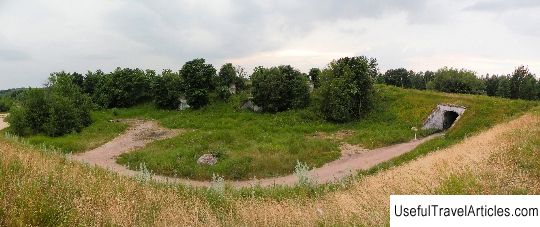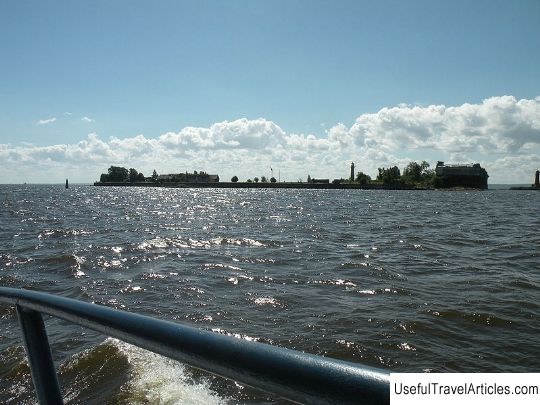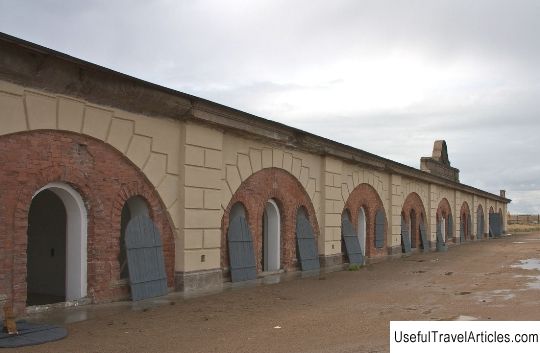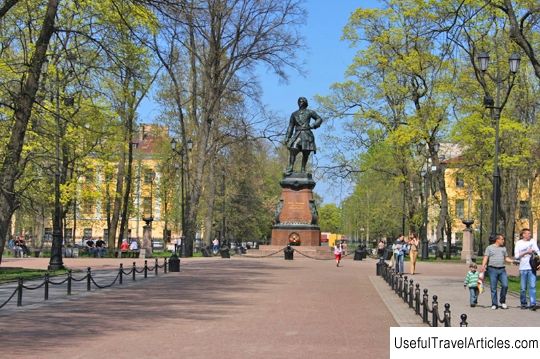Fort Emperor Alexander I description and photo - Russia - St. Petersburg: Kronstadt
Rating: 7,8/10 (6765 votes) 
Fort " Emperor Alexander I " description and photo - Russia - St. Petersburg: Kronstadt. Detailed information about the attraction. Description, photos and a map showing the nearest significant objects. Photo and descriptionFort "Emperor Alexander I", or "Plague", is one of the long-term defensive structures included in the defense complex of Kronstadt. It is located on a small island south of Kotlin Island. The fort was built in 1838-1845. The initial project was drawn up by L.L. Carbonier. After his death in 1836, Lieutenant General M. Dostrem revised the project. In the same year, Emperor Nicholas I approved a new version. Engineer Colonel Von der Weide was appointed as the builder. The task of the fort is to control the South Fairway through the crossfire complex along with the forts Risbank (Paul I), Peter I and Kronschlot. Fort "Emperor Alexander I" was built in the form of "bkhb", dimensions 90x60 meters, has four battle tiers, which can accommodate 137 guns, is capable of conducting all-round defense. The fort was commissioned in the summer of 1845. On the opening day, Nicholas I arrived at the fort, tasted the workers' food, approved it, and granted the workers 50 silver kopecks each. The fort never took part in hostilities, but left a strong impression on the commander of the allied squadron, Admiral Nepir, during the Crimean War. However, it is worth noting that the main troubles for the English army in the Gulf of Finland at that time were not delivered by cannons, but by sea mines together with scythe barriers. In the 60s of the XIX century, with the widespread use of rifled artillery (instead of smoothbore) fort lost its combat function and was turned into a mine and ammunition depot. In 1896 he was removed from the state. In 1894 A. Yersen made the discovery of the causative agent of the plague. In Russia, at the same time, KOMOCHUM was formed - "A Special Commission for the Prevention of Plague Contagion and Fight Against It Should It Appear in Russia." Prince A.P. Oldenburgsky was appointed chairman of the commission. Fort "Emperor Alexander I" was an ideal place to organize a plague laboratory. Complete isolation and, at the same time, closeness to the city were ideal conditions for the opening of the laboratory. In early 1897, the fort was handed over to the Institute for Experimental Medicine. Veterinarian Mikhail Gavrilovich Tartakovsky was its first head. 2 departments were formed here: infectious and non-infectious. There was a whole menagerie, including about 16 horses, from the blood of which anti-plague serum was produced. Besides, there were rooms for living and resting, for receiving guests and for holding scientific meetings and conferences. Access to the fort was strictly limited. With the help of the steamer "Microbe", communication with the outside world was carried out. In addition to the plague, the study and production of serum against other dangerous diseases took place here: typhus and relapsing fever, cholera, tetanus, scarlet fever, dysentery. Working in the laboratory was deadly dangerous business. Despite the strictest regime, there were 2 outbreaks of the plague: in 1904 and 1907. Among the dead was the head of the laboratory V.I. Turchaninov-Vyzhnikevich. The bodies were burned here, in the fort's cremation oven. In 1917, the laboratory was disbanded, the equipment was removed. The fort went to the military. Most likely, warehouses were organized here for some time, probably even something resembling a guardhouse. This is evidenced by the strange concrete rooms of the third tier. In the 1990s, rave discos were held on the territory of the fort. Currently, the fort is in an abandoned state. But there is a project for the construction of an entertainment complex with a theater stage, a cafe, a museum, a shopping area, a bar and a restaurant in the fort.       We also recommend reading Doi Tung Royal Villa description and photos - Thailand: Chiang Rai Topic: Fort Emperor Alexander I description and photo - Russia - St. Petersburg: Kronstadt. |




